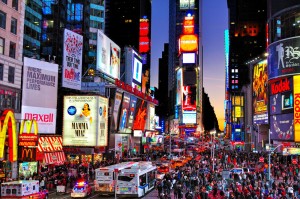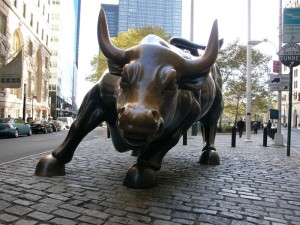 Population of New York City 2013
Population of New York City 2013
The current population of New York City is estimated to be approximately 8.337 million people, which is an increase of about 1.1% from the last record of the population. Historically, for at least the last couple of decades, the population of New York City has been much greater than both the population of Los Angeles and Chicago. In fact, New York City is the most populous city in the United States of America. Based on the total land area and the total population of the city, the population density of New York City is 27,550 people per square mile.
Demographics of New York City
The largest ethnic group in New York City is the white ethnicity, which makes up about 44% of the population. About 25.5% of the population identifies as black and about 12.7% of the population identifies as Asian. Also, Hispanics make up about 28.6% of the population. The fastest growing demographic in the city is the Asian ethnic group. Specifically, the city makes up about 15% of the country’s Korean population. Also, the city contains the largest Asian Indian Population in the Western Hemisphere, the largest Russian, Italian, and African American populations in all of the country. New York City has historically been a place of many different cultures due to Ellis Island. Because of this, about 37% of the population is born in a foreign country.
Religion in New York City
The largest religious group in New York City is the Roman Catholic Church, which makes up about 53% of the religious population. The next largest group is the Jewish faith, which makes up about 29% of the population. There is also a Muslim population, making up 2% of the population. The rest of the population is either non-religious or of some Protestant religion.
New York City Central Park
Central Park is a public park at the center of Manhattan in New York City. The park initially opened in 1857, on 778 acres (315 ha) of city-owned land (it is 840 acres today). In 1858, Frederick Law Olmsted and Calvert Vaux won a design competition to improve and expand the park with a plan they entitled the Greensward Plan. Construction began the same year, continued during the American Civil War, and was completed in 1873. Central Park is the most visited urban park in the United States.
Population Projections of New York City
The population of New York City is projected to continue to increase through the year 2030. Despite this growth, the population is expected to have a negative net migration percentage over the next couple of decades. However, the natural increase of people in the city accounts for the majority of the change. This natural increase means that the number of births is expected to exceed the number of deaths.
| Year | Population (millions) | Percent Increase |
| 2015 | 8.547 | 2.50% |
| 2020 | 8.693 | 1.70% |
| 2025 | 8.923 | 2.60% |
| 2030 | 9.12 | 2.20% |
 Income Distribution in New York City
Income Distribution in New York City
The top 1% of the population in New York City controls over 45% of the income earned in the city. Along the lines of this fact, the bottom 50% of the people only has 9% of the income. Not only this, but the state of New York itself has the highest income inequality among all of the states. Specifically, New York City has the highest inequality of income among all of the cities.
New York City Population Growth
Historical Population of New York City
Over the course of the last two decades, the population of New York City has slightly increased except for two years, when it decreased from 1990 to 1991 and 2009 to 2010. There was also a sharp increase in the population from 1999 to 2000.
| Year | Population (millions) |
| 1990 | 7.322 |
| 1991 | 7.304 |
| 1992 | 7.305 |
| 1993 | 7.329 |
| 1994 | 7.341 |
| 1995 | 7.35 |
| 1996 | 7.361 |
| 1997 | 7.383 |
| 1998 | 7.404 |
| 1999 | 7.428 |
| 2000 | 8.015 |
| 2001 | 8.063 |
| 2002 | 8.093 |
| 2003 | 8.127 |
| 2004 | 8.17 |
| 2005 | 8.214 |
| 2006 | 8.251 |
| 2007 | 8.31 |
| 2008 | 8.347 |
| 2009 | 8.392 |
| 2010 | 8.186 |
| 2011 | 8.245 |
Other Resources
Learn more about New York City Population Statistics here.